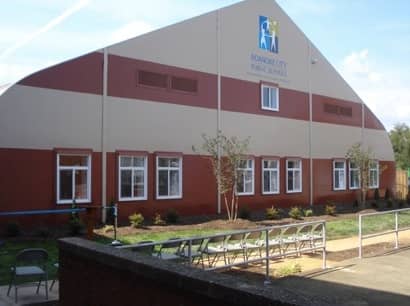%20Photo%20credit%20-%20Legacy%20Building%20Solutions.jpg) Most architectural fabric buildings are white. If you ask the industry or marketplace why, there are normally two answers: Either 1) we could not get another color because of lead time or minimum quantities for our desired color, or 2) we were told colors fade quickly and are not a long-term option. Both of these concerns are valid, but the suppliers of these materials now offer options to address both concerns and give the buyer many more choices.
Most architectural fabric buildings are white. If you ask the industry or marketplace why, there are normally two answers: Either 1) we could not get another color because of lead time or minimum quantities for our desired color, or 2) we were told colors fade quickly and are not a long-term option. Both of these concerns are valid, but the suppliers of these materials now offer options to address both concerns and give the buyer many more choices.
Lead times/Minimum orders
Domestic suppliers can produce custom products with short turnaround times and at small manufacturing sizes. Look at these two custom runs made with school colors:
Roanoke Virginia Public Schools
Harvard Crimson Commons, Cambridge, MA
Architectural fabric was custom matched to these school colors to give a new, vibrant twist to the traditional brick and mortar, or simply white, building.
Longevity, color stability
Many plastics formulators say fading is more likely to occur to colors, particularly those in certain bright color wheel areas like reds and greens. While that is true, the industry has overcome these problems by using inert colors and top finishes. Poly Vinyl Fluoride (PVF) is an inert material that can be pigmented with various colors and manufactured as a thin (1 mil) film, imparting stability and color fastness. Several commercial films are manufactured for the architectural fabric industry based on technology from the aviation and coatings industries. The colored film is applied to the surface of the architectural fabric, and some manufacturers offer 20-year warranties for color retention alone.
Alternatively, very high (essentially pure) Polyvinylidene difluoride (PVDF) can be pigmented and applied as a liquid top coat. Several commercial brands are supplied, primarily derived from long-term paint technology. Here, the PVDF is much thicker and much more concentrated than that used on lower end fabric structures. Again, long-term color stability is guaranteed.
In both cases, the inert features of these materials dictate some additional fabrication and installation techniques. Factory fabrication to form the architectural fabric into the structure shape requires thermal welding on non-colored surfaces. More planning is required, but the end result is worth it. Custom colors may incur a price surcharge but routine or standard colors generally do not. Check the industry for available standard colors.
So yes, you CAN add color to your architectural fabric building!




